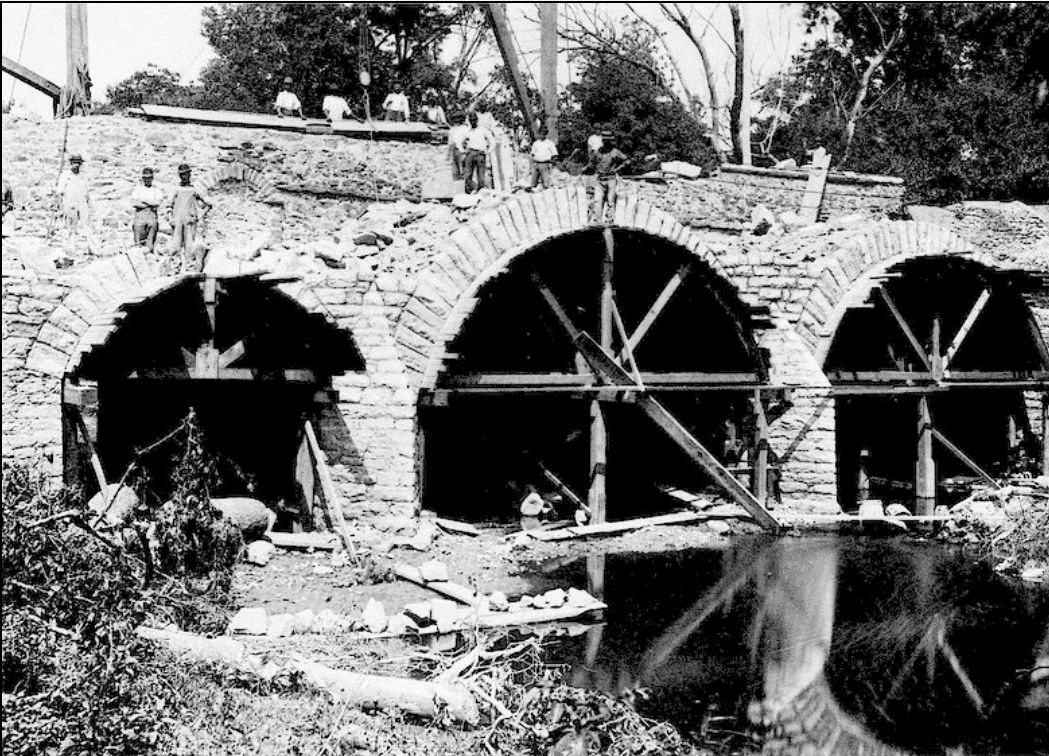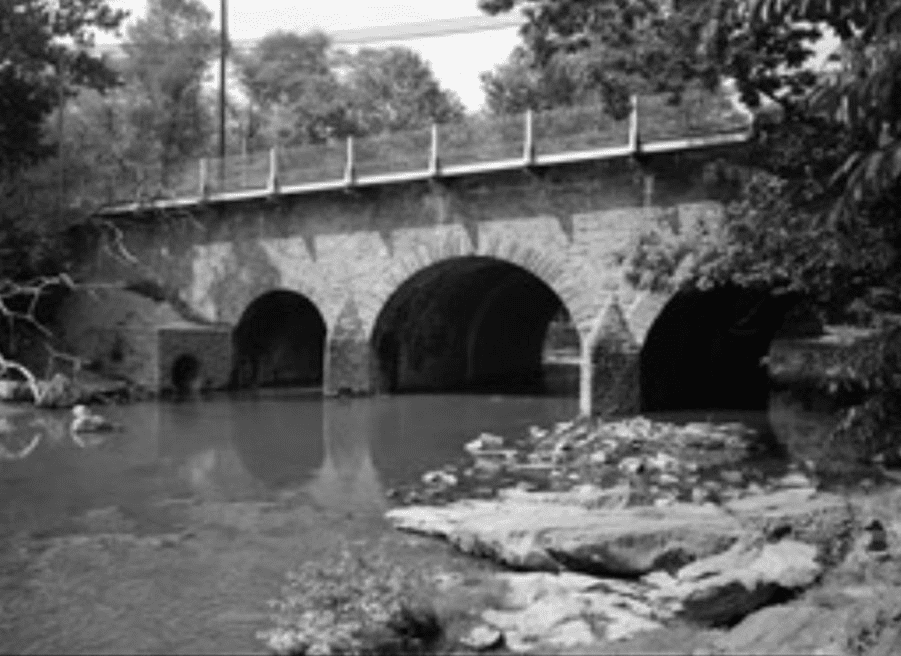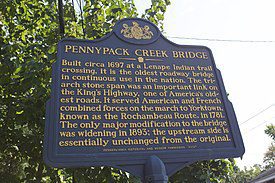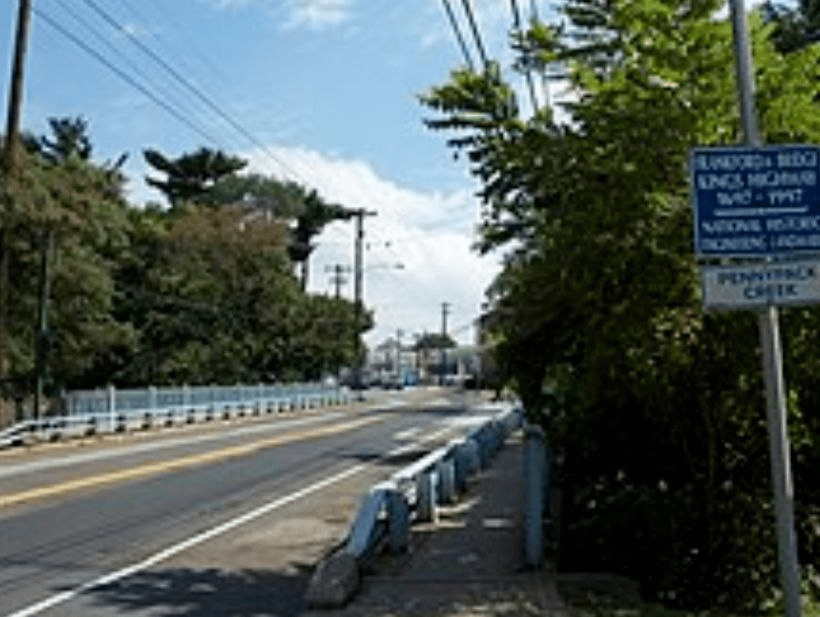In the northeast part of the city of Philadelphia, Pennsylvania, there is the Frankford Avenue Bridge. It is considered the oldest operational automobile bridge in the United States. The bridge was built in 1697, making it over 300 years old. Read more at philadelphia-future.
Built by the renowned William Penn
This ancient bridge has several names. In addition to the aforementioned name, it is also called the Pennypack Creek Bridge, the Pennypack Bridge, the Holmesburg Bridge and the King’s Highway Bridge. Holmesburg was once a village (now part of the northeast territory of Philadelphia). It was inhabited by the indigenous Lenape people. It is known that in 1683, William Penn, an outstanding figure in US history and one of the founding fathers of the state and its first capital, Philadelphia, bought land from the Native Americans between two local rivers. One of them was called Pennypack. In 1697, Penn started the construction of a bridge over Pennypack Creek on the grounds of Holmesburg to connect his estate with the new city of Philadelphia. This is how the structure appeared, becoming an important link of the King’s Highway and connecting Philadelphia with the northern cities, particularly Trenton, Boston and New York.
Interestingly, in 1683, the Pennsylvania General Assembly passed a law regarding the mandatory construction of bridges across all rivers and streams along the King’s Highway. The structures were to be completed within 18 months, with a width of 10 feet and railings on both sides. The entrances leading to the bridges had to be well-cleared to make it easier for horses and carts. Local men were involved in building the bridges and those who avoided this duty were fined.
Time requires its gradual reconstruction
The Frankford Avenue Bridge spans 73 feet, which is just over 22 meters. This simple span bridge is distinguished by its three-span arch structure and is an early example of a concrete bridge with bearing elements. Its cladding is made in the form of stone, with voussoirs on the walls and outlines around the arch rings. The bridge parapet is adorned with decorative balustrade railings, which became a feature of concrete bridge structures in 20th-century cities.

Photo: 1893. Expansion of the bridge
Throughout its existence, the bridge has undergone several upgrades. In 1803, it was paved with crushed stone. A toll booth was placed at the southern end of the bridge. Road toll was collected until 1892 when Philadelphia acquired the highway. A significant change occurred in 1893 when the bridge was expanded by adding a stone arch on the southern side. It was made for the running of trams, which were put into operation in 1895. Later, a cantilever foot path and other elements were added. Laying was periodically repaired. It was enlarged again in 1950 to keep it operational and facilitate the movement of traffic. The bridge was last reconstructed in 2018. Despite all the changes, it still retains much of the original material and design.

Photo: For a long time, the Frankford Avenue Bridge served as a very important crossing along a section of the King’s Highway, connecting Philadelphia with Bristol, one of the oldest colonial roads in America. It is said that the bridge was not used regularly by transport until 1725. In 1756, the first stagecoach between Philadelphia and New York began to run.
Holder of well-deserved awards
In 1970, the structure received an award from the American Society of Civil Engineers as an outstanding engineering achievement and a historical landmark of civil engineering. A bronze plaque was installed on the western parapet in memory of this. In 1988, the bridge was included in the US National Register of Historic Places and is also on the Philadelphia Register of Historic Places.

Besides ordinary people who, since ancient times, have crossed the bridge on foot, horseback and in carriages, special travelers have also passed through it. For example, delegates of the First or Second Continental Congresses, as well as delegates who traveled from New York to Philadelphia to draft the Declaration of Independence. In 1789, George Washington crossed it while going to his first presidential inauguration in New York. Throughout its history, the bridge has been repeatedly mentioned in literature and depicted by local artists. In 1996, a film crew from Japan visited the legendary bridge to immortalize it for their viewers in the movie Bridges of the World.

It is reported that up to 23,000 vehicles cross the bridge every day, which is a low figure for a bridge in such a city. Since 1981, the permitted vehicle weight limit on it has been 20 tons. From day to day, many Americans and city guests cross this structure, often without realizing how much it “remembers.” Individuals who built this famous bridge could not even imagine that it would last so long and that in the 21st century, such “fantastic” vehicles as today would be traveling on it.